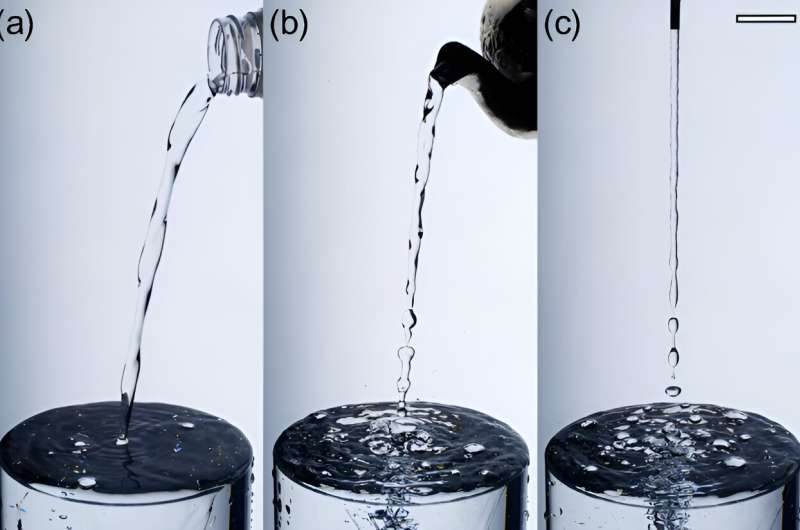January 9, 2024 report
This article has been reviewed according to Science X's editorial process and policies. Editors have highlighted the following attributes while ensuring the content's credibility:
fact-checked
peer-reviewed publication
trusted source
proofread
Shape of water jet found to influence sound of impact on still water

A trio of mechanical engineers at Seoul National University has found that the shape of a water jet dropped into a glass of water is the determining factor in the noise that results. In their paper published in the journal Physical Review Fluids, Mouad Boudina, Joonoh Kim and Ho-Young Kim describe experiments they conducted with a falling water stream colliding with still water.
Prior research and anecdotal evidence have suggested that different types of noise result from different types of moving water striking still water—the temperature of tea poured into a half-filled mug, for example, or the amount of rainwater falling from a roof into a collecting pool.
In this new study, the researchers investigated the factors that lead to differences in such types of noise. To that end, they devised a simple experiment that involved sending a small amount of water through a nozzle into a water-filled cylinder. To gather data, they placed cameras around the area and a microphone in the water that was attached to a computer capable of measuring sound levels.
The researchers then sent a few millimeters of water through the nozzle multiple times, adjusting the height of the nozzle each time. Video from the camera was used to study characteristics of the water as it dropped through the air and into the cylinder, striking the still water.
The researchers found that increasing the height from which the water fell led to a breakup of the water stream into a train of droplets—it also led to an increase in the number of air bubbles (and ripples) that formed as the moving water struck the still water. They also found that as the water broke up into droplets, the collision produced louder sounds.
They determined that the increase in loudness was due to more air being trapped in the still water as the bubbles struck. They found that thin water streams tend to make more noise than thick streams due to the thinner stream breaking into droplets. And this, they conclude, explains why constraining the flow from a teapot into a thin stream while pouring a cup of tea does not produce a desired quieter sound.
More information: Mouad Boudina et al, Amplitude of water pouring sound, Physical Review Fluids (2023). DOI: 10.1103/PhysRevFluids.8.L122002
Journal information: Physical Review Fluids
© 2024 Science X Network





















